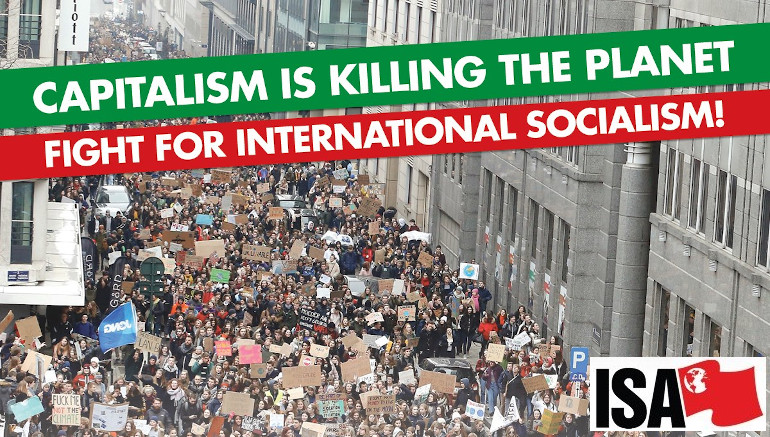Judy Beishon is a member of the Socialist Party (CWI in England & Wales).
 The dust is still settling on the most recent war in Gaza, which included the massacre of over 2,000 Palestinian civilians at the hands of the Israeli state terror machine. It is the latest bloody chapter in the Israeli occupation, as a timely book tracing its history shows.
Cursed Victory: a history of Israel and the occupied territories
By Ahron Bregman
Published by Allen Lane, 2014, £25
Ahron Bregman’s very readable Cursed Victory covers the four decades of Israeli occupation from the 1967 Israeli war against Egypt, Syria and Jordan, until 2007. The author marks the 1967 war as “the turning point when, in popular western perception, the Israelis turned from the beleaguered victims of Arab aggression to occupiers”. He is astonished that “a vibrant and intellectual nation overwhelmingly aware of the pain of history – went down the path of military occupation”. Bregman, an academic at King’s College London, is an Israeli who served for six years in the Israel Defence Force (IDF), who then left Israel because he strongly opposed the occupation.
In just six days in June 1967, the Israeli military unexpectedly seized the West Bank, East Jerusalem, Gaza strip, Sinai Peninsula and Golan Heights. The extent of the victory buoyed the mood in Israel to enable those in power to override the idea of immediately returning newly acquired lands they saw as beneficial to keep, especially the West Bank and the walled old city of Jerusalem, which they viewed as the ‘cradle of Jewish history’.
Bregman describes the widespread destruction of West Bank villages that took place during the war. In East Jerusalem, the Muslim ‘Moroccan Quarter’ was also wiped out of existence, with some residents left buried in the rubble. In the Golan Heights, taken from Syria, 95% of the 138,000-strong population fled from the Israeli advance or were evicted, and could not return. Only the Druze were allowed to remain.
The book also highlights the horror of forced emigration from the West Bank to Jordan in 1967. Many of those pushed from their homes were second-time refugees, the first time being in 1948. In 1967 some were ‘encouraged’ to leave and many were overtly compelled, with the result that “somewhere between 175,000 and 250,000 Palestinians left during and immediately after the war, [and] only a fraction, perhaps 14,000 in all, were allowed to return”. In addition, many people were forced out of the Gaza strip to live on the West Bank or in Jordan. In the 18 months after the war, the strip lost “a staggering 25% of its pre-war population”.
Israel’s then defence minister, Moshe Dayan, wanted to make the occupation as invisible as possible but, as Bregman rightly recognizes, this was not out of concern for the Palestinians but had the aim of minimizing resistance. Dayan’s real outlook was shown by one of his quotes in the book: “We want emigration [out of the West Bank]… we want to create a new map”.
Dayan’s softly-softly approach was soon set aside when faced with a wave of revolt in schools across the occupied areas against Israeli dictates distorting history. For being at the forefront of the protests and strikes, the town of Nablus suffered a vicious clampdown by the IDF, including arrests, curfews, house searches and a shutdown of the telephone system and public transport. Dayan was carrying out his sinister threat to the town: “If you choose rebellion, we’ll have no other option but to break you”.
A few years later, following an attack on a Jewish family visiting Gaza, Israeli general, Ariel Sharon, unleashed brutal assaults on the strip, with the throwing of grenades into houses before troops entered them. He authorized the destruction of rows of houses to allow military vehicles to patrol at will.
The dust is still settling on the most recent war in Gaza, which included the massacre of over 2,000 Palestinian civilians at the hands of the Israeli state terror machine. It is the latest bloody chapter in the Israeli occupation, as a timely book tracing its history shows.
Cursed Victory: a history of Israel and the occupied territories
By Ahron Bregman
Published by Allen Lane, 2014, £25
Ahron Bregman’s very readable Cursed Victory covers the four decades of Israeli occupation from the 1967 Israeli war against Egypt, Syria and Jordan, until 2007. The author marks the 1967 war as “the turning point when, in popular western perception, the Israelis turned from the beleaguered victims of Arab aggression to occupiers”. He is astonished that “a vibrant and intellectual nation overwhelmingly aware of the pain of history – went down the path of military occupation”. Bregman, an academic at King’s College London, is an Israeli who served for six years in the Israel Defence Force (IDF), who then left Israel because he strongly opposed the occupation.
In just six days in June 1967, the Israeli military unexpectedly seized the West Bank, East Jerusalem, Gaza strip, Sinai Peninsula and Golan Heights. The extent of the victory buoyed the mood in Israel to enable those in power to override the idea of immediately returning newly acquired lands they saw as beneficial to keep, especially the West Bank and the walled old city of Jerusalem, which they viewed as the ‘cradle of Jewish history’.
Bregman describes the widespread destruction of West Bank villages that took place during the war. In East Jerusalem, the Muslim ‘Moroccan Quarter’ was also wiped out of existence, with some residents left buried in the rubble. In the Golan Heights, taken from Syria, 95% of the 138,000-strong population fled from the Israeli advance or were evicted, and could not return. Only the Druze were allowed to remain.
The book also highlights the horror of forced emigration from the West Bank to Jordan in 1967. Many of those pushed from their homes were second-time refugees, the first time being in 1948. In 1967 some were ‘encouraged’ to leave and many were overtly compelled, with the result that “somewhere between 175,000 and 250,000 Palestinians left during and immediately after the war, [and] only a fraction, perhaps 14,000 in all, were allowed to return”. In addition, many people were forced out of the Gaza strip to live on the West Bank or in Jordan. In the 18 months after the war, the strip lost “a staggering 25% of its pre-war population”.
Israel’s then defence minister, Moshe Dayan, wanted to make the occupation as invisible as possible but, as Bregman rightly recognizes, this was not out of concern for the Palestinians but had the aim of minimizing resistance. Dayan’s real outlook was shown by one of his quotes in the book: “We want emigration [out of the West Bank]… we want to create a new map”.
Dayan’s softly-softly approach was soon set aside when faced with a wave of revolt in schools across the occupied areas against Israeli dictates distorting history. For being at the forefront of the protests and strikes, the town of Nablus suffered a vicious clampdown by the IDF, including arrests, curfews, house searches and a shutdown of the telephone system and public transport. Dayan was carrying out his sinister threat to the town: “If you choose rebellion, we’ll have no other option but to break you”.
A few years later, following an attack on a Jewish family visiting Gaza, Israeli general, Ariel Sharon, unleashed brutal assaults on the strip, with the throwing of grenades into houses before troops entered them. He authorized the destruction of rows of houses to allow military vehicles to patrol at will.



